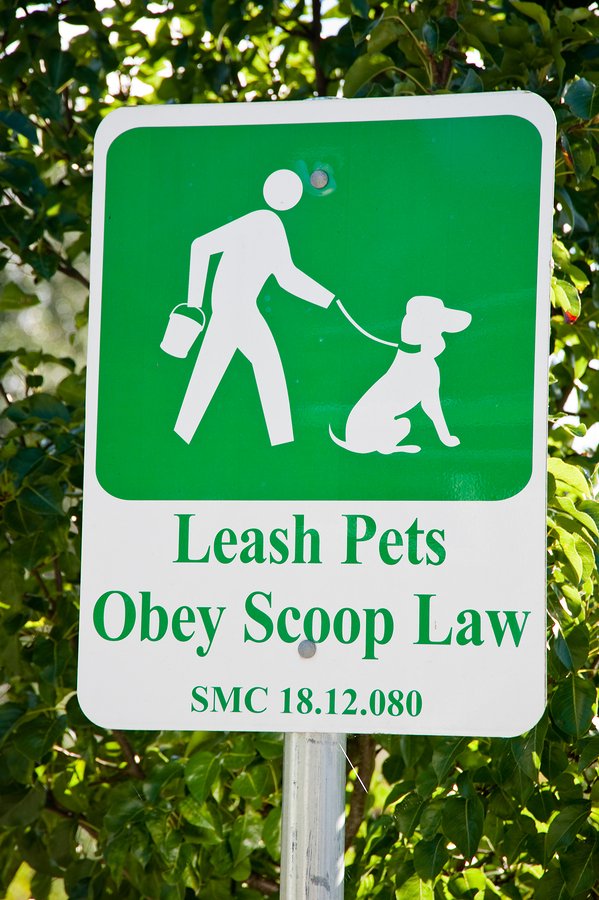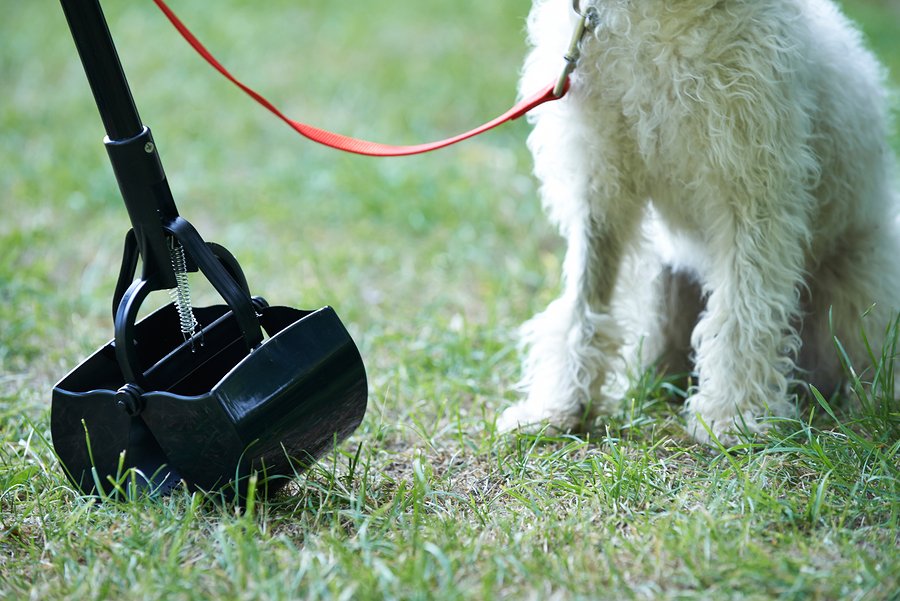Taking sides in a presidential election happens only once every four years, but loving or loathing dogs is forever. And while all readers of Your Dog lean decidedly one way, there’s a whole universe on the other side that we tend to dismiss out of hand; we put our hands over our ears, so to speak, when they talk.
But this is what they’re saying. They don’t like our canine friends. In fact, in a LawnStarter survey of more than 700 homeowners in five U.S. metropolitan areas, almost one in 10 named dogs as their top complaint. They don’t like the noise, the obnoxious behavior (what we on our side of the aisle call exuberance), the sniffing. But what really has many riled is the poop, says LawnStarter editor in-chief John Egan.
Bigstock

A Consumer Reports article entitled “Top Gripes” backs up his assertion. When pollsters for that magazine queried 1,125 people about 21 different gripes, dog poop topped waiting for repairmen, unreliable cell phone service, and even traffic jams, noisy neighbors, and speeding drivers, as an everyday annoyance.
To be fair, it’s not only non-dog owners who are miffed by poop that hasn’t been picked up. Plenty of conscientious dog “parents” who do curb their pets are also bothered by those who don’t, saying it makes walking unpleasant and creates an even more contentious relationship between those in a neighborhood who own dogs and those who don’t like them.
Truth be told, it does more than fray the social rope. Let’s face it. Poop is smelly, hard to wipe off if you inadvertently step in it, contains harmful bacteria and other pathogens that can make you and other pets sick, and, when there’s a lot of it (as in a dog park), contaminates what are often vulnerable environments that contain vernal pools, other wetlands, threatened species of birds and other wild animals, vegetation, and the list goes on. Consider that dog waste may contain giardia, Salmonella, and E. coli, which can infect animals that share the land. And if any of your dog’s waste makes it into a waterway when pushed there by, say, heavy rains, the nitrogen it contains depletes the waterway of oxygen, which fish need to survive.
It’s not far-fetched. Storm water commonly carries pet waste directly into waterways, including waterways that may be used by people. Beaches have even had to close because of dangerously high levels of pathogens in the water that scientists have been able to track back to dog waste.
So for both social and ecological reasons, everyone who walks a dog should pick up their pet’s waste — every single time. Otherwise, it ruins it for everybody. Yes, it can be a pain — distasteful as well as problematic if there are no trash cans nearby, as is often the case on hiking trails in state parks and other places managed by public trusts. But here are some gadgets and suggestions for making the job less onerous, everything from bags to electric cordless shovels to outdoor vacuums.
Mutt Mitts. Many people use bags to lift their dog’s waste from the ground, and that’s absolutely fine. Many dog bags come in rolls that fit neatly into a fanny pack or pocket and are strong enough not to puncture easily. You can also use plastic bags from the grocery store, which work particularly well if you double bag them. That way, if there’s a slight tear, you have a better chance of keeping something from getting on your hands that shouldn’t be there. And using bags to pick up and discard dog waste after they’ve already been used to haul groceries is an ecologically smart way to cut down on the manufacture of plastic.
But for those who would otherwise leave a dog’s droppings where they landed, Mutt Mitts may prove just the ticket, as they’re easier to maneuver. Because there’s an actual mitt on one end, you don’t quite need to flip the bag over once you lift up what your dog drops off, so there’s less chance of the deposit falling out. Rather than using a deft flick of the wrist, you just gently turn the bag over. Also, the two-ply, puncture-resistant bag is opaque — a boon for those who do not like to look at the stuff. The degradable mitts are not onerously priced. You can get 100 for about $20; 200 for about $30.
Flushable Poop Bags. You still have to pick up the poop the old fashioned way, but you don’t have to find a garbage can, or put loaded bags in your garage in a trash can until garbage pick-up day, or take bags to the dump. One brand, Flush Puppies, is made of polyvinyl alcohol rather than regular plastic, which is what allows it to be sent down the toilet. The bag breaks down in water. And the product is not terribly expensive, especially if you don’t want to be left holding the bag, literally — 60 go for $9.49 on Amazon.
Bigstock

Pooper Scooper. These devices keep you from getting your face close to the waste and of course are also great for people with back pain or other challenges that make bending over difficult. A pooper scooper comes with handles atop a stick that’s about a yard long. At the bottom of the stick is a little shovel-like apparatus, a set of jaws, if you will. When you squeeze the handles, the poop gets scooped up, and then you simply deposit it in an appropriate trash receptacle. Some pooper scoopers, rather than having jaws, come with spades to use on hard surfaces or rakes for using on grass. Whatever the gizmo at the bottom, people might find a pooper scooper easier to use in the backyard than to take along on a walk through the neighborhood.
That said, it’s not terribly heavy. Nature’s Miracle Jaw Scoop (the number one best seller in pooper scoopers on Amazon, for about $20) weighs just a little over a pound. This particular product comes with antimicrobial product protection and a non-stick, odor-blocking surface, but you’ll still want to wash it — perhaps with a hose outside. That’s true even for pooper scoopers to which you can attach a bag. Here and there, a hot soapy washing is a good idea.
Poop Freeze. No, you don’t stick it in the freezer. You spray it on the dog’s drop-off from an aerosol can, and it makes the waste firmer, thereby easier to pick up. Not only is that a boon at those times your dog has loose stools. It also helps to eliminate odor. It’s good, too, for those rare times that your pet can’t wait until she gets outside because she is feeling sick. A 10-ounce can of one brand, Poop Freeze, costs about $16.
Electric solutions. Another way not to have to touch the waste through a bag or mitt and also not bend is to suck up your dog’s waste with a rechargeable electric power tool. One is the Auggie Dog, an award winner at the 2012 Global Pet Expo. It’s not cheap, running roughly $130. But for your money, you also get a charger, a cap that secures the contents so you can walk between two or more pickups on the same jaunt outside (the machine weighs less than 3 pounds), and a deodorizing cleaning solution. The pickup and release button allows you to get rid of the waste with no muss. And the tool lifts waste just as well from grass as from pavement.
Another company offers a cordless electric device called the Pooch Power Shovel. Retailing for about $50 (including the first 10 Power Pooch bags), it claims to quickly suction dog waste from grass, concrete, or even snow-covered ground into a plastic bag that removes for ease of disposal. And the bag wraps around the vacuum’s intake area to prevent waste from touching any part of the device. You can get up to 50 “cleanups” after a 12-hour charge via the AC adapter that comes with the product.





